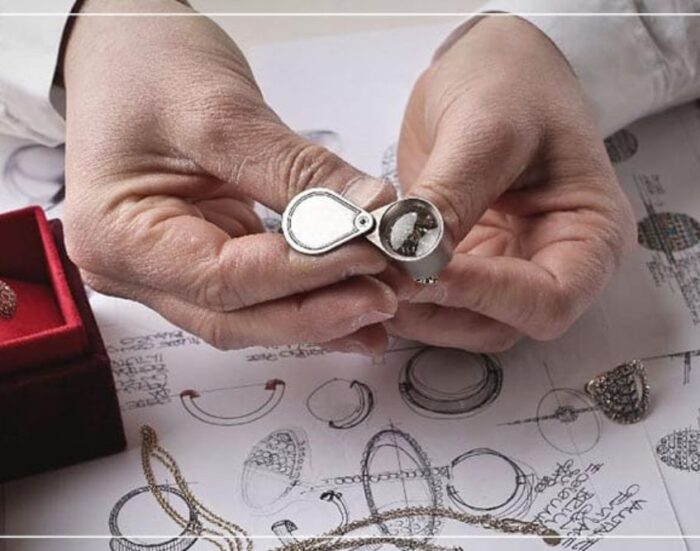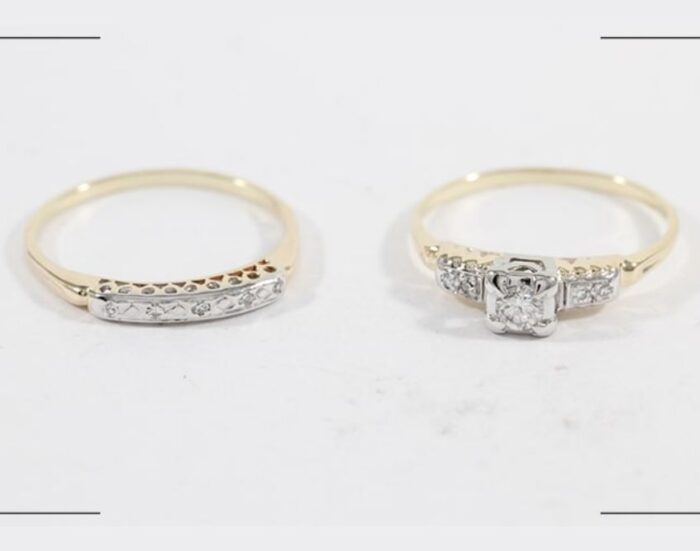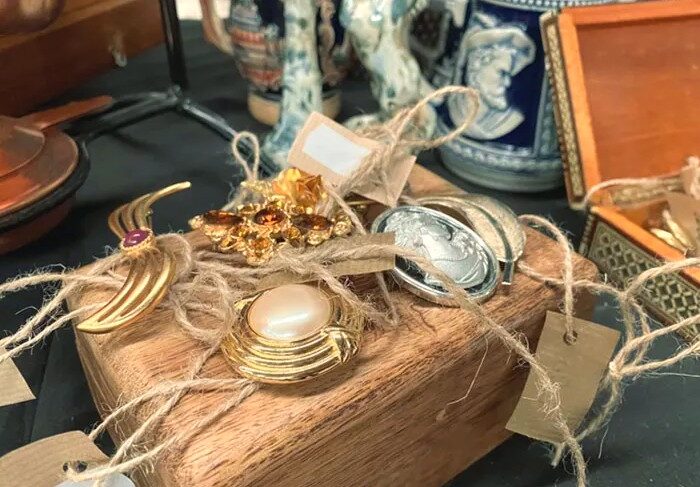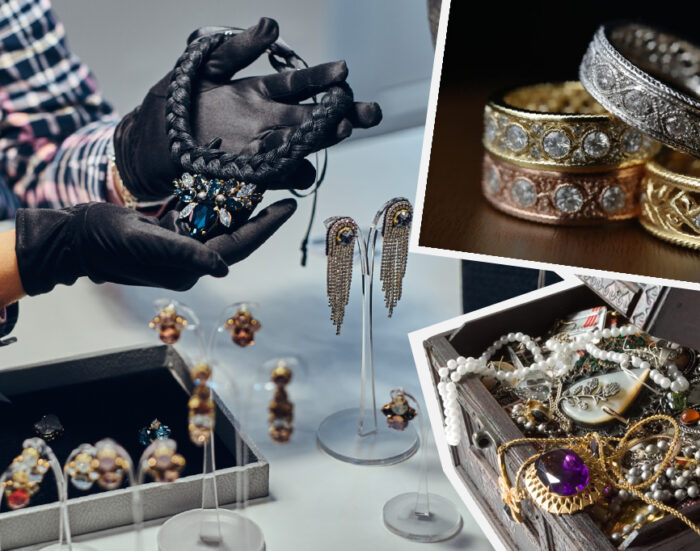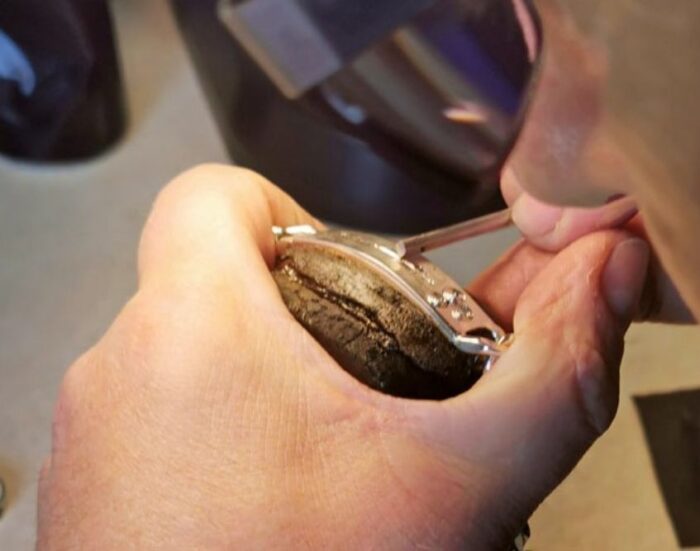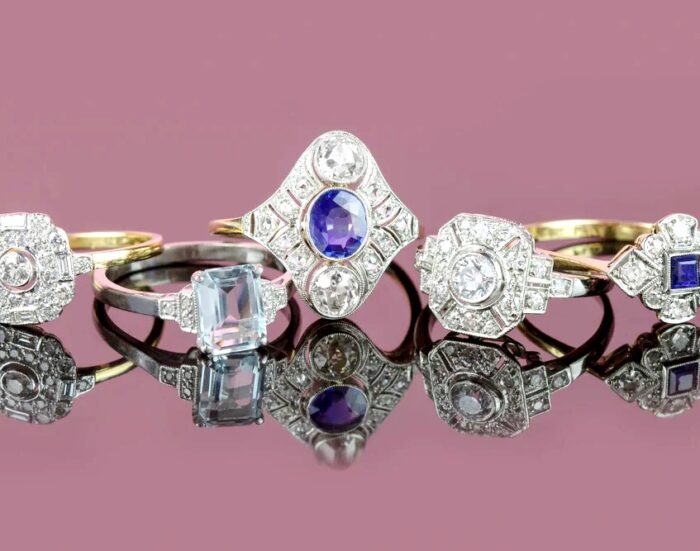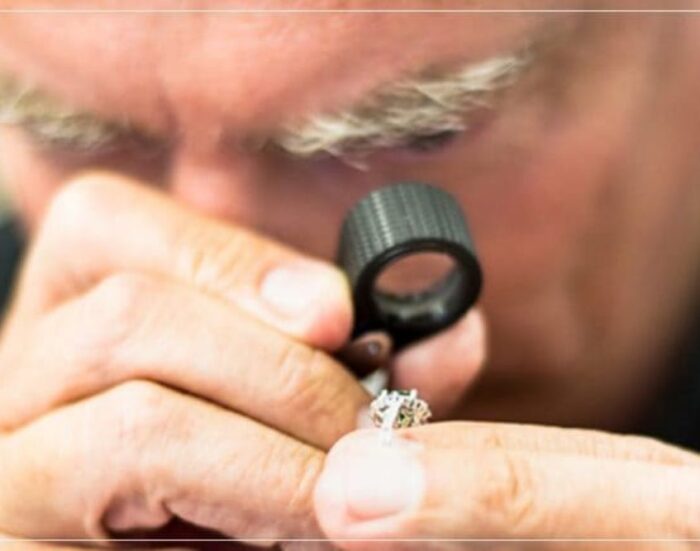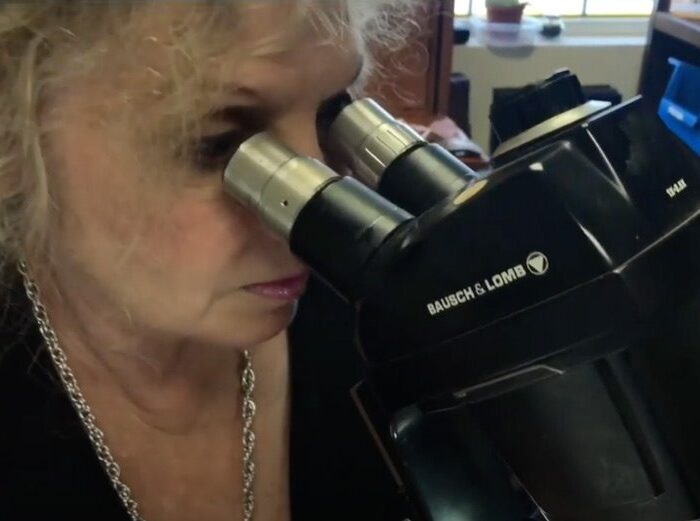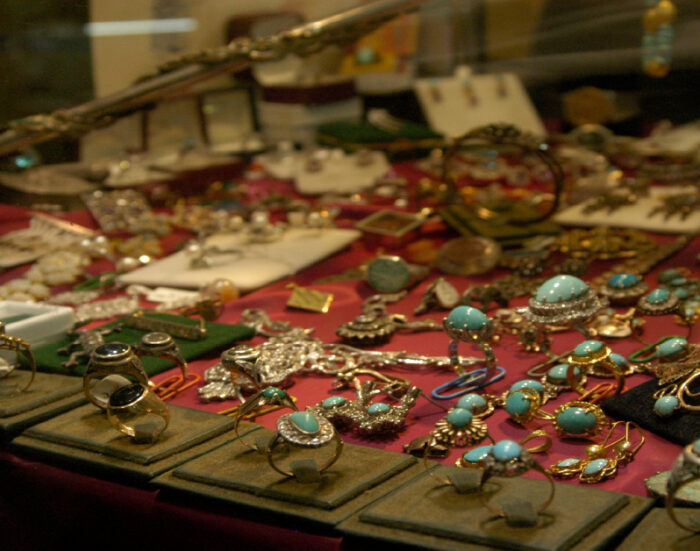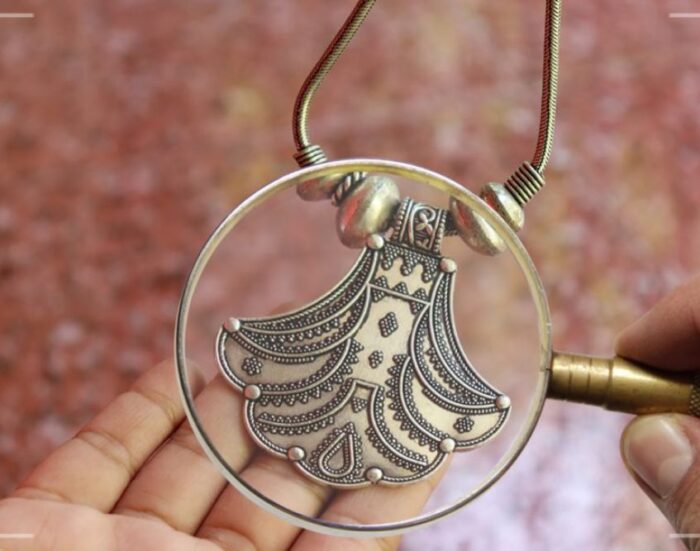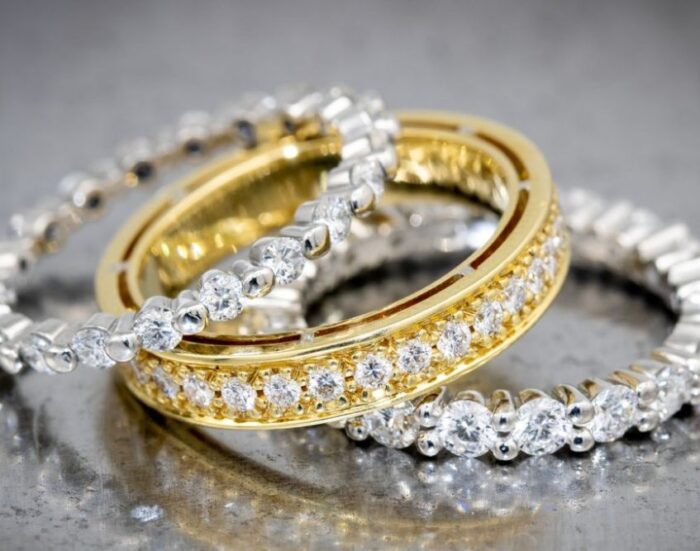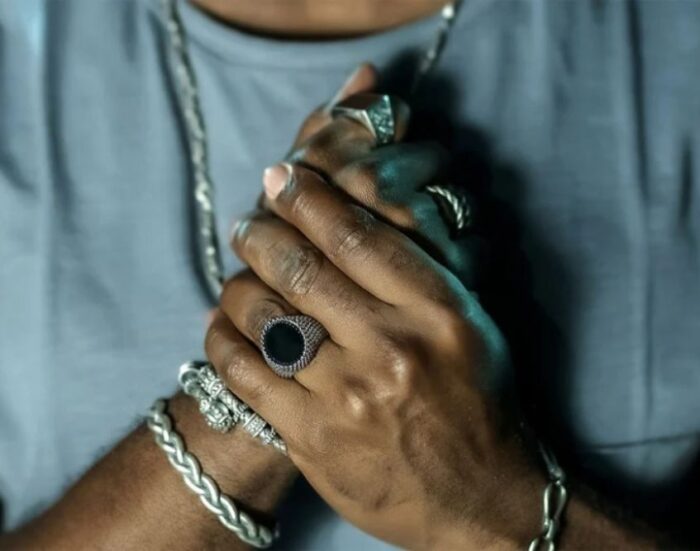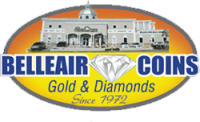Learn How To Sell Your Jewelry Without Being Scammed.
We all look to make a little extra money these days. So many of us have to work a side hustle of one kind or another to pay the bills. It’s always smart to look for ways to cash-in.
“One way to make extra money is to sell your old, unwanted, and unworn jewelry. How many of us have a box full of tangled ornaments that we never wear? How many of us have various pieces of jewelry in a drawer that haven’t seen the light of day for years? How many of us have jewelry that was inherited from family members that had never been worn? This is the time to look for antique stores near me in your area or online, and know how much they are worth.”
You never know; your unwanted jewelry might just net you a windfall. In this post, we’ll look at how and where you can sell your antique jewelry without getting scammed.
The First Step- Appraisal
The first, and perhaps most important, step in selling your jewelry while getting a fair price is having it appraised. This is an important step because you never know what your jewelry might be worth.
A piece of jewelry that you think is just costume jewelry might actually be worth something. A piece of jewelry that you think is valuable might not be worth anything. Professional antique jewelry appraisers will tell you that sometimes even old appraisals are wrong.
They are sometimes able to perform more detailed appraisals that reveal details indicating a piece is even more valuable than previously estimated. It is always a good idea to have your jewelry appraised by a professional before selling it.
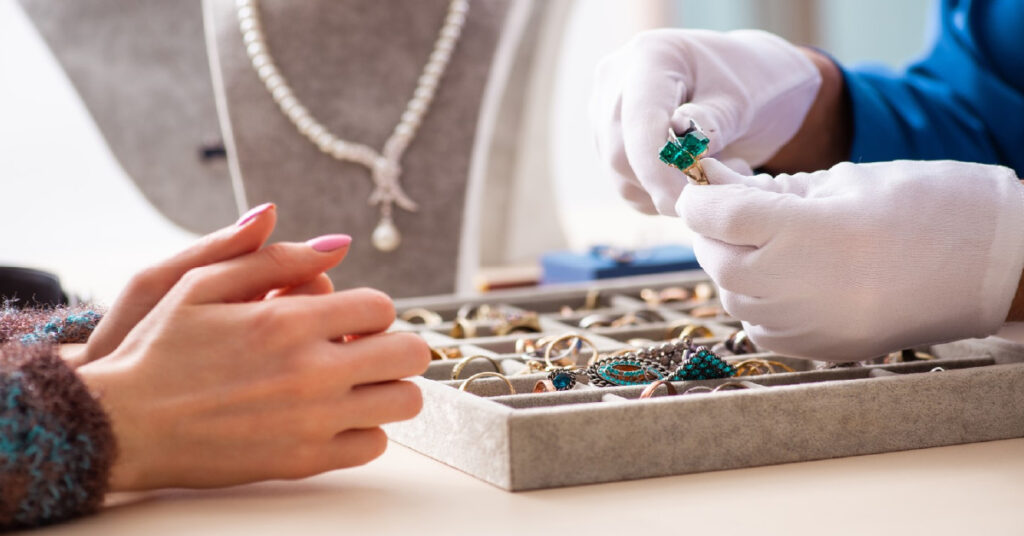
Where/How Can I Find an Appraiser?
Once you have decided to have your jewelry appraised, the search is on for a professional appraiser who can accurately assess the value of your jewelry. When you search for an appraiser, you want to look for a certified expert in order to avoid being scammed. The American Society of Appraisers, the International Society of Appraisers, and the National Association of Jewelry Appraisers are all good places to start. Members of these groups have extensive training and experience. They follow a set of standards and ethics that ensure you won’t get scammed. Look for an appraiser who is certified by one of these groups.
Places That Buy Antiques Online
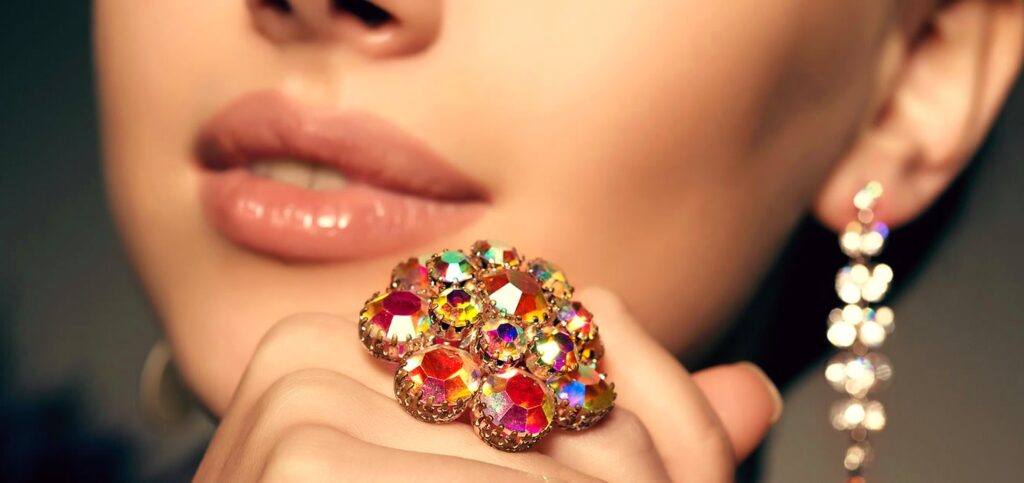
Today, everything is for sale online. It seems obvious that you would want to find antique jewelry dealers online. Once you have your piece appraised, the next step is to look for a place online where you can get the best price. Tread carefully when you go online. You run the risk of dealing with antique jewelry buyers who will try to offer you a lot less than your jewelry is worth.
You might send a piece to someone and then find they don’t return it after you reject their offer, or they don’t send the payment when you accept it. It is best to shop around and find an antique jewelry buyer with a good reputation who offers a price that matches your appraisal. If you do wish to work with online jewelry buyers, make sure you work with very reputable players or through renowned auction houses and very well-established online websites that allow you to pick and choose among a variety of dealers that have been vetted.
Finding Local Antique Jewelry Dealers
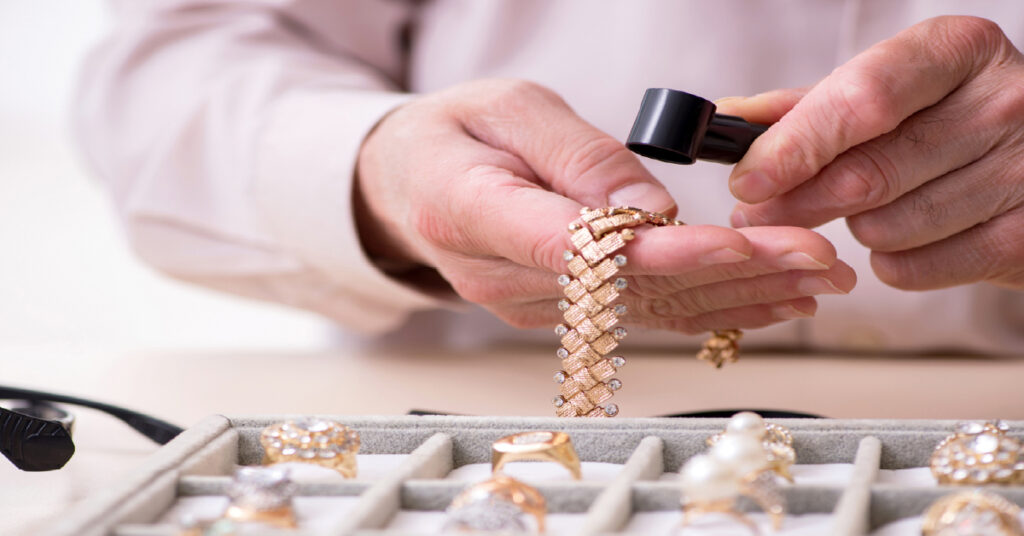
If you feel more comfortable selling your jewelry in person, there are still plenty of antique jewelry buyers out there. There are a wide variety of antique jewelry stores, consignment shops, and pawn shops that will buy your vintage jewelry. The American Gem Society has a store locator on their website that helps you find a list of reputable local jewelry buyers. Whether you are selling online or looking for someplace local, it is always wise to check the website review before selling to anyone in order to avoid being scammed. Always shop around and get offers in writing. You can also check with your appraiser. They can often connect you with reputable antique jewelry dealers and vintage jewelry buyers. Selling your jewelry to make extra money is a great idea, but always proceed with caution in order to avoid getting scammed.
What’s The Difference Between Fine Jewelry And Fashion Jewelry?
What’s The Difference Between Fine Jewelry And Fashion Jewelry?
When in doubt, accessorize yourself with jewelry and look amazing. Ornaments are always showcased by being timeless & perfect example of retro & modern-chic generation. Moreover, It can never go out of style & will remain popular and allured by people.
Fashion has explored a lot by discovering different styles of jewelry including, fine jewelry and fashion, costume jewelry, antique & vintage & many more in the market. And here, in this article, we will looking towards the difference between fine and fashion jewelry which is very important.
The History of Fine and Fashion Jewelry
The first question arises here that how jewelries were actually made? This pleasant object has rocked the ages many years ago. Making of Jewels has been around about as long as mankind has been.
In fact, the first known precious item was from around 40,000 years ago and was worn by Magnons. The pieces included bracelets and necklaces constructed of teeth, bones, and stones.
The word is taken from the Latin word “jocale” that means “plaything”. It has been a replica of human obsession with things that are not necessities but are meant for pleasure.
Which one is expensive?
While costume jewelry is not as precious in value as fine jewelry. Fashion jewel is often has sentimental value rather than being expensive.
Sometimes, it’s not so cut and dry to distinguish between fashion and fine jewelry though. For example, a turquoise ring that is inlaid in 14kt gold is considered to be fine jewelry. Whereas, an imitation turquoise ring composed with silver or other metal would be fashion jewelry.
Moreover, when authentic pearl in 18kt gold would be fine jewels, while a man-made pearl that is inlaid in plated silver or gold would be fashion jewelry.
What does “gold purity” actually mean when rated 9K, 10K, 14K, 18K, 22K, and 24K gold?
The Main Difference between Fine and Fashion Jewelry
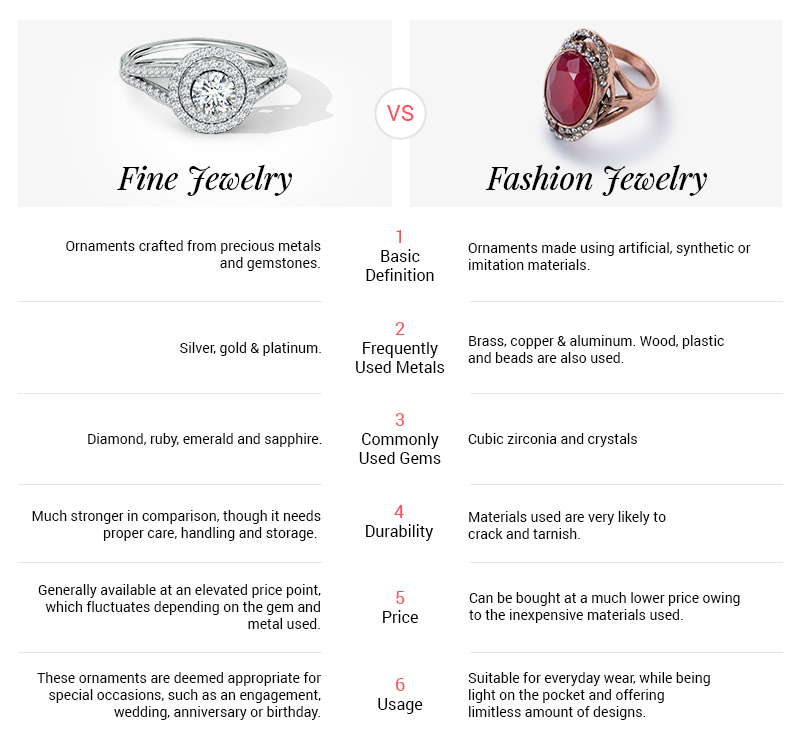
The main difference between fine and fashion jewelry is the material that is used to make them. While fine jewelry is made with silver, gold, platinum metals, and is embedded with precious stones like diamonds, gems, and pearls.
Fashion jewelry is not appreciated so much for its monetary value as it is for the fun and flair associated with it. Fashion jewelry, also referred to as costume jewelry is made of a large variety of materials, such as bronze, brass, copper, aluminum, base metal, leather, plated metals, and so forth.
Selling Price Difference
Fine jewelry brings a much higher price tag than fashion jewelry does. When selling expensive jewelry, you may often expect to receive between 20% and 50% of the initial purchase price.
But, in terms of fashion, a jewelry buyer will have no interest in buying this item at all and you’ll be forced to resort to selling your fashion jewelry for peanuts if even at all.
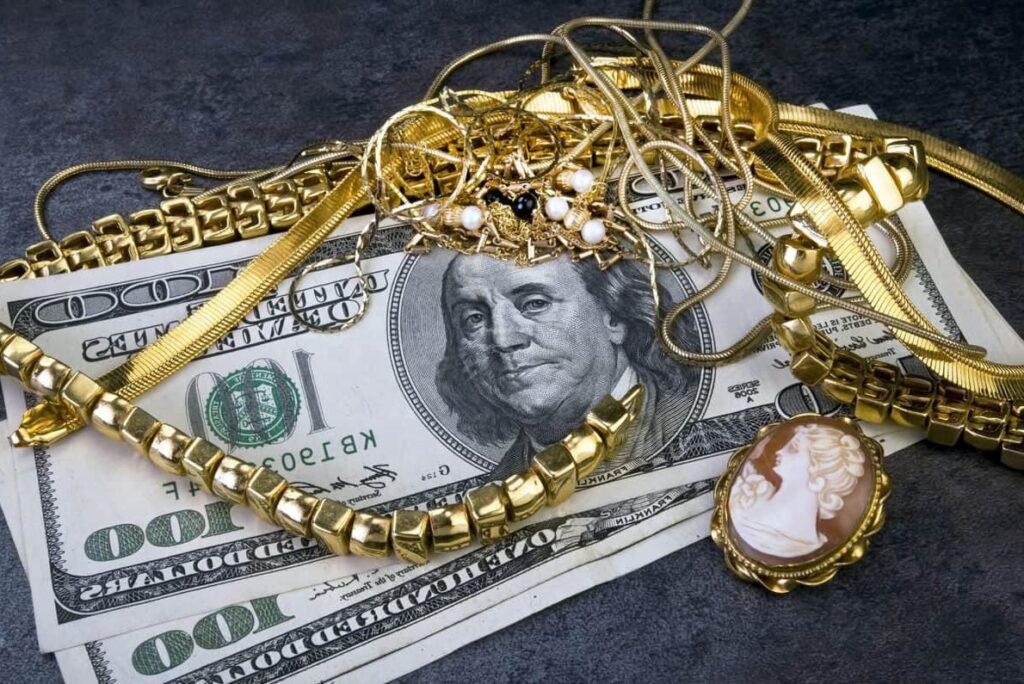
Who can accurately identify the difference?
Sometimes, it takes an expert to tell the difference between the two as well as describe exact definition of costume jewelry and fine. It’s not unusual for tests to be conducted to confirm if a stone or metal is genuine or not. This testing can be done through appraisal session.
Trust Issues
If you are looking to sell your fine or fashion jewelry, or need to find out which yours is – fine or fashion, you’ll want to consult a jewelry buyer you can depend on to shoot you straight. Feel free to reach out to the trustworthy experts at Antique Jewelry Buyers for a dependable appraisal…every time.
What Factors You Need to Get the Best Deal on Antique Jewelry
What are the most important considerations to make while buying rare antique jewelry?
Antique jewelry has been bought and sold for centuries. Anything that is an antique eventually becomes valuable and an investment opportunity for the one who loves dealing with ancient pieces. Dealing with precious old and rare ornaments benefits both the buyer and seller in terms of profit. That is, the one receives a precious treasure and the other the highest value. Despite the fact, there are different checklist for buying and selling antique jewelry.
Let’s take a closer look at the buyer’s experience when purchasing an antique jewelry.
6 important things to consider when dealing with old jewelry pieces
Selling antique jewelry can be a profitable decision, and to make it more effective, keep the checklist for an antique jewelry buyer in mind at all times. Below are the 4 important things i.e. checklist to check while buying an old jewel…
1. Cultural significance
What is the cultural significance of that particular piece of jewelry? This is an important factor that an antique jewelry buyer usually looks for. What makes it so unique? What does it stand for? Such questions arise in the minds of buyers because if it is valuable, it must be a representation of something ancient and vintage. The design and patterns capture the essence of the origin from where the jewelry is sourced.
2. Authenticity
Another genuine and important factor is the authenticity of antique jewelry. It’s no secret that jewelry involves fairly large transactions, and before spending money on the jewelry, they conduct a proper evaluation of the uniqueness of the designs and structure of the jewel. Any rare ornament collectors primary goal is to own an authentic piece of vintage jewelry.
3. Condition
Along with being authentic antique jewelry, a buyer prefers investing in jewelry in good condition, and many buyers conduct an appraisal to determine how much the jewelry is worth. A vintage jewelry appraisal enables to determine the value of the item.
4. Rare
The uniqueness and rarity of an antique jewelry is what makes it appealing. And the scarcity(limited numbers) of jewelry increases its value and investment potential. It’s human nature if they want to own something that only a small number of people have. The rarity of antique jewelry makes it special and valuable, and as a result, buyers pay a high price, leaving the seller with a large profit.
5. Appraisal and Documentation
Get a professional evaluation and accurate documentation that describes the antique jewelry’s materials, gemstones, historical background, and condition. This information adds credibility and makes it more appealing to potential buyers.
6. Marketing and Exposure
Promote the antique jewelry effectively to reach a large audience of potential buyers. Use various channels like special auctions, antique fairs, trusted dealers, or online marketplaces to get more visibility.
7. Negotiation and Timing
Negotiate skillfully with potential buyers to get the best possible value for the antique jewelry. Also, consider the timing of the sale, as market trends and demand can influence the selling price.
Last Words!
It’s critical to understand what you’re dealing with and who you’re dealing with. As a result, before selling or buying antique jewelry, always cross-check it with the four factors listed above.
Additionally, if you want to sell your pre-owned ancient jewelry for instant cash. We are an authorized antique jewelry buyer who will pay the highest price for your ancient, vintage, and estate jewelry and provide you with a free appraisal with no obligation.
Where to Sell Old Jewelry: The Ultimate Antique Jewelry Selling Guide in 2024
Selling old jewelry can be daunting, particularly if you need help figuring out where to start. Fortunately, numerous options are available to you in 2024, such as online marketplaces, auction houses, and specialty jewelry stores. However, choosing a reliable buyer is essential to ensure you receive the best price for your antique jewelry. By conducting thorough research and making informed decisions, you can turn unwanted jewelry into a valuable asset, maximizing your financial opportunities. To help you through this process, we have provided a step-by-step guide below:
We all have sentimental pieces of jewelry that we cherish, but sometimes, the need for cash outweighs their value. Whether you’ve inherited jewelry from a relative or own pieces that no longer bring joy, selling them can be a good option. This guide aims to help you navigate the process. It’s important to understand that “estate jewelry” refers to any previously owned piece, regardless of age, while “antique jewelry” typically refers to items over 100 years old. Understanding this distinction is crucial in effectively marketing and selling your jewelry.
Finding a Vintage Jewelry Appraisal Online
Before selling your vintage jewelry, obtaining an appraisal from a certified jewelry appraiser is essential. Their profound understanding of the antique jewelry market can clearly indicate your jewelry’s worth. Most antique jewelry buyers seek an appraisal to confirm the piece’s value. The valuation of your jewelry hinges on several factors, including the value of the gemstones and precious metals, the jewelry’s age, history, and previous ownership, the jeweler’s identity who designed and crafted the piece, and the current market demand for that particular jewelry type. Rest assured, this process is reliable and will help you make informed decisions about your jewelry.
Factors Considered by a Certified Jewelry Appraiser
How does an online vintage jewelry appraisal ascertain your jewelry’s value? The valuation is influenced by multiple factors that antique jewelry buyers consider. These encompass the intrinsic value of the gemstones and precious metals, the jewelry’s age, its historical significance and past owners, the designer and creator’s reputation, and the prevailing market demand for that specific jewelry style. Comprehending these elements can aid in more accurately pricing your jewelry and securing a favorable deal when selling.
Identifying the Optimal Platform to Sell Estate Jewelry Online
In your quest for antique jewelry buyers, you have numerous avenues at your disposal. While pawn shops are an option, they typically propose lower prices. Local jewelry stores may refrain from purchasing jewelry for resale, and their operational costs could result in a lower payout for your jewelry. Auctions and auction houses might be suitable for high-value items. Online platforms like eBay or Etsy offer extensive reach, but marketing your jewelry effectively may require considerable time and effort. To help you with this, we’ve included a section on how to prepare your antique jewelry for sale, ensuring it looks its best and attracts the right buyers.
Selling estate jewelry online through reputable dealers is a viable route. To assist you in this, we’ve compiled a list of reputable online dealers for antique jewelry. Ensuring the online dealer’s trustworthiness and credibility is paramount. Verify their online reputation, customer reviews, and business longevity. Additionally, assess their Better Business Bureau rating. The advantage of online selling lies in its global reach, enabling you to connect with antique jewelry buyers worldwide without needing physical visits. Nonetheless, selecting a reputable dealer is essential to circumvent scams and guarantee your jewelry’s best price.
Learn Engraving & Etching Techniques from Jewelry Appraisal Experts
Engraving and etching, two popular techniques in jewelry making, are not just for the experts. These techniques, which can transform a simple piece of metal into a work of art, can be learned by anyone with the right guidance. That’s why attending workshops or learning from experts in jewelry appraisal is an excellent way to gain insight into the process. Professionals can equip you with the knowledge of the proper tools, the best materials to work with, and the techniques needed to create beautiful designs that can add character and personality to any piece of jewelry.
As a non-expert, I found it challenging to differentiate between engraving and etching. To gain a deeper understanding, I decided to visit a local jewelry appraisal. The appraiser’s insights into the intricate work of engraving and etching, and how they significantly impact jewelry design, were enlightening. Let’s delve into these techniques further…
What is engraving?
Engraving, a meticulous and precise process, involves cutting or carving a design, image, or text onto a hard surface such as metal, wood, or glass. The engraved design, whether decorative or functional, is often used for creating personalized gifts, jewelry, signage, and artwork. This art form, whether done by hand or with a machine’s assistance, demands a high level of skill and precision to produce a top-notch result, showcasing the artistry and craftsmanship involved.
In this era of technological advancements, laser engraving has emerged as a game-changer. This innovative technique, which has made engraving easier and more efficient, involves heating up the laser to create cavities that reveal the image or text more easily on jewelry or silverware pieces, sparking fascination and curiosity among engravers.
What is etching?
Etching, a time-honored technique, is a testament to the artistry and tradition of creating markings on silver or gold jewelry. The process entails preparing the metal and drawing markings using acid-resistant wax. When acid is applied to the metal, it creates visible marks on the surface, a process that has been passed down through generations, adding depth and history to this technique. This historical significance of etching is a reminder of the rich heritage and craftsmanship that forms the foundation of the jewelry industry.
Antique jewelry appraisers have been informed about a new laser etching technique. This technique involves using a laser to wipe the surface of the metal without cutting it, and then drawing intelligent markings on it. It’s a non-invasive method that allows for intricate designs without damaging the metal.
Significant Differences Between Engraving And Etching.
From a vintage jewelry appraisal, I learned that the main distinction between these techniques is that engraving is a physical process, and etching is a chemical process. An engraver cuts down the surface with a cutting tool to make a mark, and an etcher burns out the surface to make a mark. This clear distinction is crucial for understanding the unique characteristics and applications of each technique.
If talking about laser technology, here are a few significant points to discuss in depth:
Marking shape-
When processing creates a shallow-shaped marking,
It discerns canonical-shaped markings.
Durability-
Etching, when done, doesn’t have a deep mark as compared to engraving. That’s why engraving is more durable than the etching process and lasts for a longer duration of time.
Versatility-
The most fascinating aspects of etching is its versatility. It can be applied to a wide range of materials, including metals, plastics, lead, glass, wood, and even paper. This adaptability opens up a world of creative possibilities in the realm of jewelry design, allowing artisans to experiment with different materials and create unique, innovative pieces that push the boundaries of traditional jewelry making.
Engraving is done only on plated metals, ceramics, steel, aluminum, stones, etc.
Innovative Techniques—An Important Need For The Jewelry Industry!
According to jewelry appraisers, all these techniques serve the same purpose, but the material, durability, versatility, and design requirements differ, making them essential in the jewelry industry. In the world of innovation, every industry is trying to create new inventions to benefit the environment and our growth cycle. The jewelry industry is no exception, as innovative techniques are crucial to meeting the needs and requirements of consumers.
How to discover interesting facts about your art deco jewelry?
Uncover important information about your art deco rings through the best jewelry appraisal
Have you inherited art nouveau jewelry in your store room? Are you willing to know what historical story this 1920s-1930s piece of art holds? Or do you want to know what the piece is made up of? Then, it’s time to contact an antique jewelry appraiser online or nearby your area who is authorized and licensed in their profession. Moreover, you can also see the real worth of the vintage piece and realize that you’ve found something very precious.
Below, I’ve mentioned what details you’ll gather through an estimation session. Scroll down to learn more about the history of vintage jazz-age style jewelry.
What elements your vintage art deco jewelry consist?
Understanding what elements are used in the making of your pre-owned jazz-style engagement ring is the first thing your appraiser will inform you about. After reviewing what metal or gems are used in the carving of a ring, you’ll find something rare that has a sky-high price in the market of antique trading. Furthermore, art deco style ornaments are made with the below-mentioned elements, metals, and techniques. That’s why, they have great demand in today’s modern era.
White metals (white gold, platinum, sterling silver, silver-plated, nickel silver, and other white base metals)
- Geometric Patterns and Shapes
- Filigree (aa type of intricate craftsmanship performed in jewelry by twisting thin wires into shapes)
- Colorful Gemstones
- Enamel
What is the historical provenance and origin of your retro-style enamel jewel?
In an antique jewelry appraisal session, the next thing you’ll find is the history of the creation of the ring. In this part, he/she will inform you when the piece was created and at what place, i.e., its origin. Moreover, history can be identified by the registration marks, weight, metal, and element carvings.
What is the condition of your 1920s–30s era gemstone ornament?
In this part, you’ll be informed about the state of the piece, i.e. what is the condition? Is there any minor or major damage, or just a scratch? This things are looked after to let you know as per the condition, what will be the real worth of the item.
Is your art nouveau style earring real or fake?
The evaluator will detail you about the originality of earrings metal used is fake or real by looking after the hallmarks, jeweler maker marks or the label. And for the stones, it is checked through magnifying glass to confirm its color concentration and unusual opacity.
Where can I find the best antique jewelry appraisal?
We are an authorized jewelry buyer store that provides accurate evaluations for antique, vintage, and estate jewelry pieces. We provide the best price with every detail about art deco ornaments. Our professionals are highly skilled and experienced and offer excellent customer service for the best antique jewelry appraisals online and in-person as well. That is, we operate our business in the online world as well as from the local store in Florida.
You can contact us for the service from anywhere in Florida, and to learn more about jewelries, you can land on our other blog posts.
A Guide to Antique Jewelry Appraisals and Buyers
Are you looking to sell your antique jewelry for quick cash or to free up some funds? If so, the first step is getting an appraisal to determine the value of your items. While you can sell your jewelry independently online, it can come with various fees and complications.
Sometimes, you need quick cash to avoid a financial disaster. Other times, you need to free up money to make money. Regardless of the reason for wanting or needing funds, you’re in luck if you have some antique jewelry!
To make the process easier, consider selling to antique jewelry buyers who offer appraisals before the selling transaction. Here’s a guide to getting an assessment and finding trustworthy antique jewelry buyers.
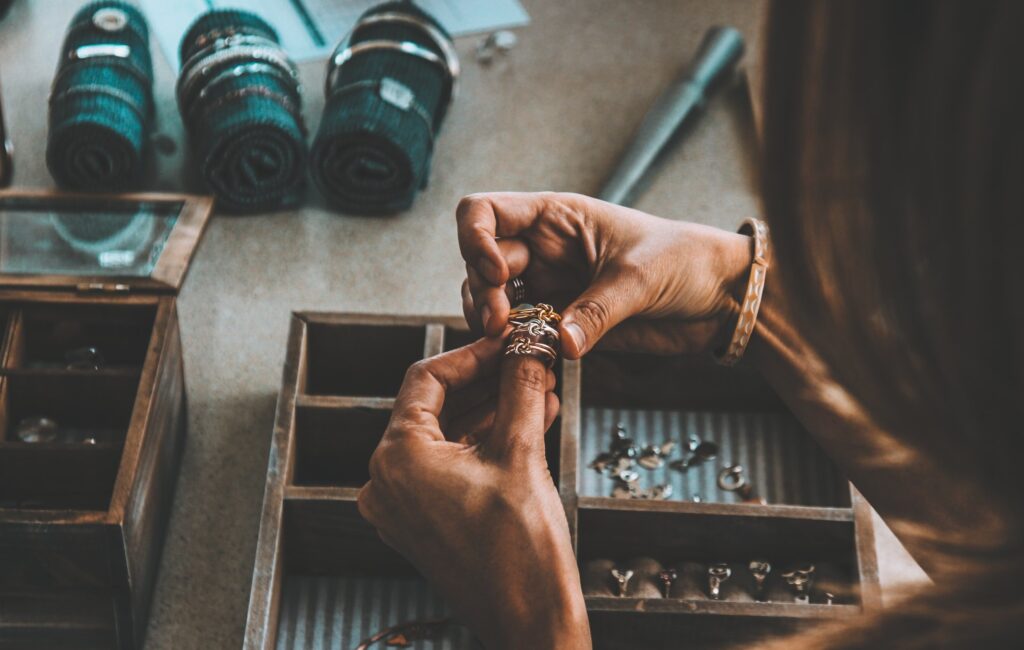
Where to Find Antique Jewelry Appraisers?
A piece of jewelry you think is just costume jewelry might be worth something. A piece of jewelry you think is valuable might not be worth anything. Professional antique jewelry appraisers will tell you that even old appraisals are sometimes wrong.
Doing business online can be risky because shady dealers can scam you and then disappear. But, if you check for a longstanding online presence and find plenty of verifiable references, you’ll expand your horizons when you don’t limit yourself only to those in your vicinity.
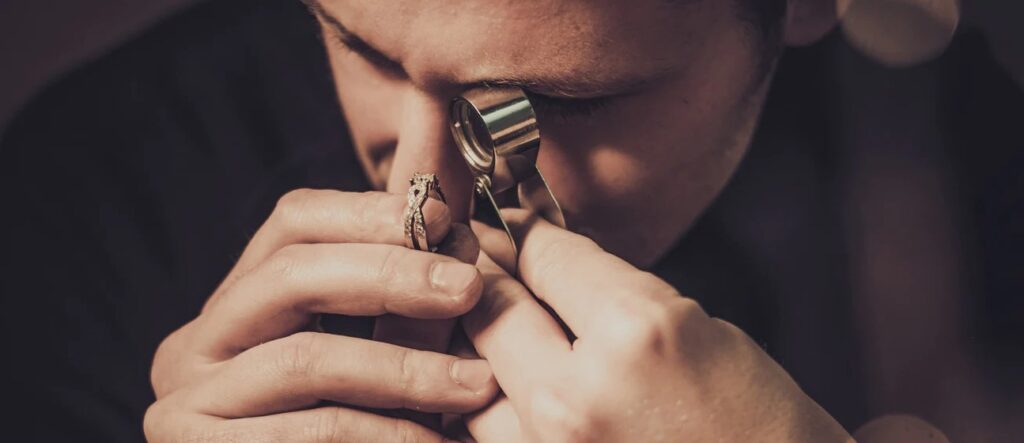
Dealing with Antique Jewelry Buyers and Appraisers
If you do elect to do business with an antique jewelry buyer, an appraisal will be part of the agenda. You may be charged a fee for the assessment, or you may be fortunate enough to have a free appraisal.
An appraisal is a professional estimation of what your piece is worth. Many things are considered, such as if it is gold, silver, or bronze. Also, the piece’s location was designed, and any other information is deemed necessary to an appraiser.
The appraisal is generally followed by an offer, the amount the antique jewelry appraiser is willing to give you for your treasure. You are at liberty to accept the offer or to reject it.
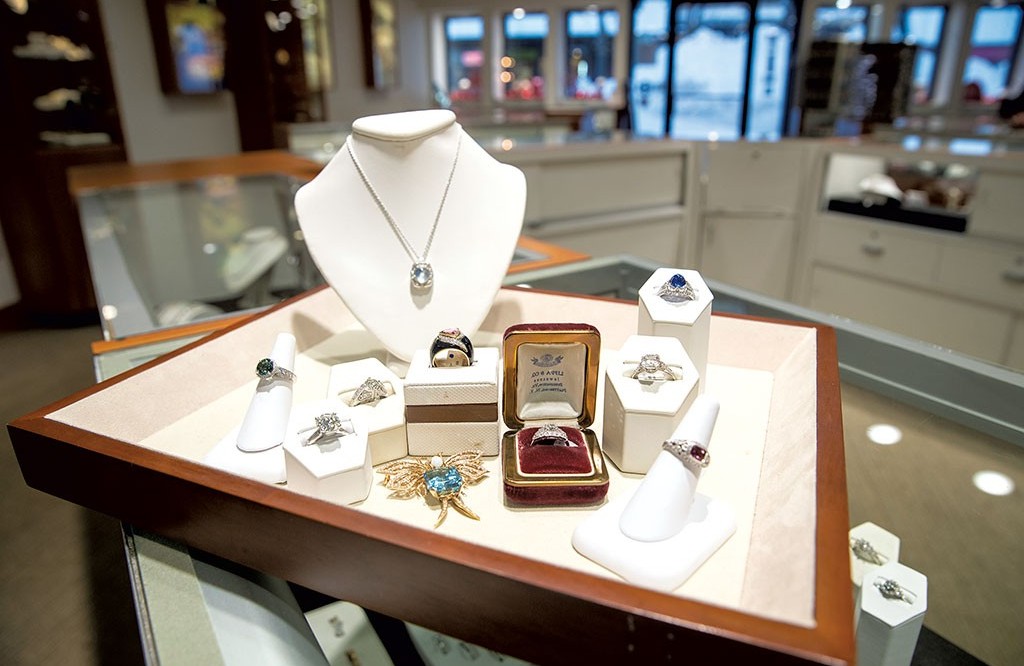
Estate Jewelry Buyers
Estate jewelry buyers are experts at buying, selling, and appraising in bulk. Estate jewelry buyers typically come to you as it would be difficult for them to load up all your items to go to an estate. Ask for credentials and references before committing to an appraisal.
Antique Jewelry Buyers
Antique Jewelry Buyers is your trusted source for having your antique jewelry appraised. We’ve been in business since 1972 and have earned an impeccable reputation for ourselves over the years.
Located in Largo, Florida, we service the entire area and have seven other Florida locations as well. We also offer appraisals online. If you are looking to sell your antique jewelry, we can help. Contact us today and find out what we can do for you.
How to Find the Best Jewelry Appraisal Services Near You?
If you have jewelry that you want to sell, insure, or inherit, you may need to get it appraised by a professional. A jewelry appraisal is a document that states the value and quality of your jewelry based on an expert’s examination. However, finding a reliable and qualified jewelry appraiser near you can be challenging, especially if you have different jewelry types requiring different appraisal standards.
What is a Jewelry Appraisal, and Why Do You Need One?
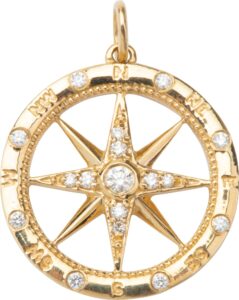
A jewelry appraisal is a written report describing the jewelry’s characteristics and condition, such as the metal, gemstones, design, and craftsmanship. It also provides an estimate of the jewelry’s value based on the current market trends and comparable sales. A jewelry appraisal can serve different purposes, such as:
– Insurance: To protect your jewelry from loss, theft, or damage, you must have it appraised and insured for its replacement value. It is the amount it would cost to replace your jewelry with a similar item of the same quality and style. An insurance appraisal should be updated every few years to reflect the changes in the market value of jewelry.
– Selling: If you want to sell the jewelry, you need to have it appraised to know its fair market value. It is the amount that a willing buyer and a willing seller would agree on in an open and competitive market. A selling appraisal should be based on jewelry’s current demand and supply, as well as its condition and rarity.
– Inheritance: If you inherit jewelry from a deceased relative or friend, you must have it appraised for estate or probate purposes. It is the value of jewelry as part of the overall estate of the deceased person, which may be subject to taxes and fees. An estate or probate appraisal should be based on the date of death value of the jewelry, which may differ from its current market value.
How to Choose a Jewelry Appraiser Near You
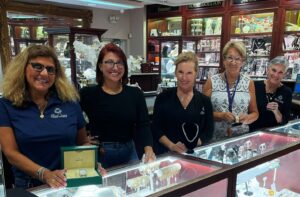
Not all jewelry appraisers are created equal. To ensure that you get an accurate and trustworthy appraisal, you need to choose a jewelry appraiser who has the following qualifications and credentials:
– Education and Training: A jewelry appraiser should have a formal education and training in gemology, the science of identifying and grading gemstones. A gemology degree or diploma from a reputable institution, such as the Gemological Institute of America (GIA) or the American Gem Society (AGS), is necessary. A jewelry appraiser should also have a thorough knowledge of jewelry history, styles, manufacturing techniques, and current market trends and prices.
– Experience and Specialization: A jewelry appraiser should have significant experience in appraising jewelry, preferably in the type of jewelry you have. For example, suppose you have antique or vintage jewelry. In that case, you need to find a jewelry appraiser who specializes in that field and is familiar with your jewelry’s historical and cultural context. Similarly, if you have estate jewelry, you need to find a jewelry appraiser who understands your jewelry’s legal and tax implications as part of an estate.
– Certification and Accreditation: A jewelry appraiser should be certified by a recognized professional organization, such as the American Society of Appraisers (ASA), the Appraisers Association of America (AAA), or the International Society of Appraisers (ISA). These organizations have strict standards and requirements for their members, such as education, experience, ethics, and continuing education. A jewelry appraiser should also be accredited by a reputable gemological laboratory, such as the GIA or the AGS, which means they can access the latest equipment and technology for testing and grading gemstones.
– Reputation and References: A jewelry appraiser should have a good reputation and positive feedback from previous clients. You can check online reviews, ratings, and testimonials from platforms like Google, Yelp, or Trustpilot. You can also ask for references from friends, family, or other jewelry owners who have used the app…
– Local Jewelry Store: You can visit a local jewelry store near you and ask if they offer jewelry appraisal services. Some jewelry stores may have in-house appraisers or work with independent appraisers who can appraise your jewelry on-site or off-site. However, it would help if you were careful when choosing a jewelry store as your appraiser, as some may have a conflict of interest or a bias toward buying your jewelry at a low price. You should always check the credentials and reputation of the jewelry store and the appraiser before you trust them with your jewelry.
– Personal Recommendation: You can also ask for a recommendation from someone you know who has sold or appraised their jewelry. It can be a friend, family member, colleague, or acquaintance who has had a positive experience with a jewelry appraiser near you. They can give you honest feedback and advice on choosing a jewelry appraiser, what to expect from the process, and how to negotiate the best price for your jewelry. However, you should still research and verify the jewelry appraiser’s credentials and reputation before hiring them.
How to Prepare for a Jewelry Appraisal?
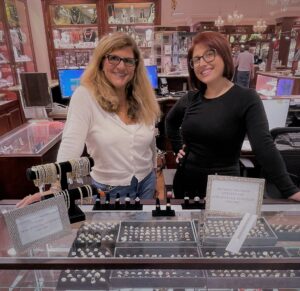
Once you find a jewelry appraiser near you, you must prepare for the jewelry appraisal appointment. Here are some tips on how to prepare for a jewelry appraisal:
– Clean Your Jewelry: You should clean your jewelry before you take it to the appraiser, as dirt, dust, or grease can affect the appearance and value of your jewelry. You can gently wipe your jewelry with a soft cloth, warm water, and mild soap. You can also use a soft-bristled toothbrush to remove any dirt or debris from the crevices. However, you should avoid using harsh chemicals, abrasives, or ultrasonic cleaners, as they may damage your jewelry or alter its color.
– Gather Your Documents: You should gather any documents related to your jewelry, such as receipts, certificates, warranties, appraisals, or grading reports. These documents can help the appraiser verify your jewelry’s authenticity, quality, and provenance. They can also help the appraiser determine the value of your jewelry based on the original purchase price, the current market price, or the replacement cost. However, you should not rely solely on these documents, as they may be outdated, inaccurate, or fraudulent. It would help if you always asked the appraiser to inspect your jewelry personally and provide an updated appraisal report.
– Know Your Purpose: You should know the purpose of your jewelry appraisal and communicate it clearly to the appraiser. Different objectives may require other appraisals, such as insurance, selling, or inheritance. You should also know the type of value you want for your jewelry, such as replacement value, fair market value, or estate value. You should also see the scope and format of the appraisal report you need, such as a verbal or written report, a detailed or summary report, or a digital or printed one. You should also know the fees the appraiser will charge you for the appraisal service, such as an hourly rate, a flat fee, or a percentage of the value.
How to Get the Most Out of Your Jewelry Appraisal?

After you have completed the jewelry appraisal, you should get the most out of your jewelry appraisal report. Here are some tips on how to get the most out of your jewelry appraisal:
– Review Your Report: You should review your appraisal report carefully and ensure it contains all the information you need and expects. You should check the accuracy and completeness of the report, such as the description, condition, quality, and value of your jewelry. You should also check the credentials and signature of the appraiser, the date and location of the appraisal, and the purpose and type of the assessment. Do you have any questions or concerns about the report? In that case, you should ask the appraiser for clarification or correction.
– Use Your Report: You should use your appraisal report for the intended purpose and keep it safe and secure. You need to use your appraisal report for insurance purposes. In that case, you should contact your insurance company and provide them with a copy of the report. You should also update your insurance policy and coverage accordingly. You need to use your appraisal report for selling purposes. In that case, you should contact potential buyers and provide them with a report copy. Based on the report, you should also negotiate the best price for your jewelry. You need to use your appraisal report for inheritance purposes. In that case, you should contact your lawyer and provide them with a copy of the report. You should also follow the legal and tax procedures for transferring your jewelry to your heirs.
Conclusion
Finding the best jewelry appraisal services near you can be a challenging task. However, it can also be a rewarding one. Following the tips in this blog post, you can find a reputable and qualified jewelry appraiser near you who can appraise your jewelry accurately and fairly. You can also prepare for the jewelry appraisal and get the most out of your jewelry appraisal report, whether you need an antique, vintage, estate, or modern jewelry appraisal.
Guide to Finding the Best Local Jewelry Buyers Near You
Finding the best local jewelry buyers near you can be challenging and time-consuming. It can be incredibly daunting if you have never sold jewelry before or are dealing with valuable or sentimental pieces. However, with careful research and consideration, you can find a reliable and trustworthy jewelry buyer who will offer you a fair price and make the selling process as smooth as possible.
Check Reviews and Reputation: Research Your Buyer Before You Sell
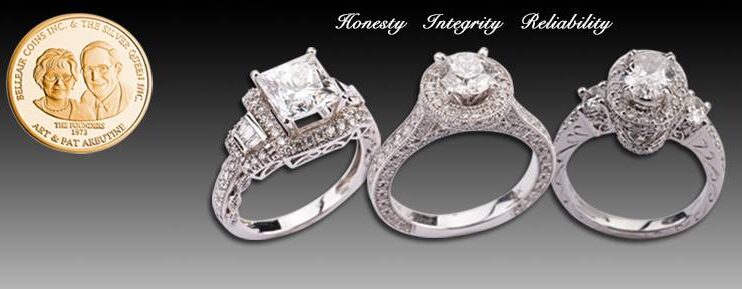
Before selling your jewelry, you’re required to research potential buyers. To start, you can check their online reputation by reading reviews from previous customers. You can also look at their ratings on platforms such as Google or Yelp and ask for referrals from friends or family who have sold their jewelry. It will help you determine their reliability, reputation, and level of customer service. A trustworthy jewelry buyer will have positive feedback from satisfied customers and be transparent about their buying process. It’s best to avoid buyers who have negative reviews, complaints, or unresolved issues.
Look for Credentials: Choose a Buyer with the Right Credentials
When choosing a jewelry buyer, it’s essential to consider their credentials. To ensure that your jewelry is appraised accurately and fairly, you should look for buyers with the proper training, certification, and experience. The Gemological Institute of America (GIA) and the American Society of Appraisers (ASA) are reputable organizations that certify buyers who meet strict standards and requirements. If you choose a certified buyer, you can be confident they have the necessary knowledge and skills to evaluate your jewelry. It’s best to avoid buyers lacking certification or dubious credentials.
Find a Buyer Who Specializes in Your Type of Jewelry
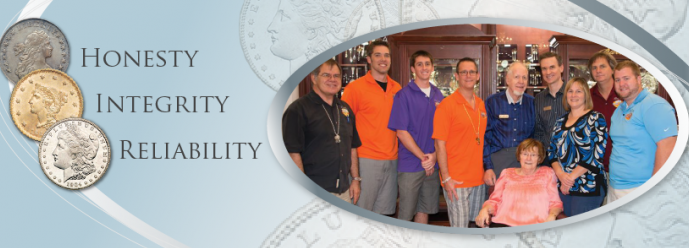
When selling your jewelry, it’s essential to consider the buyer’s expertise. Different buyers may specialize in various types of jewelry, such as antique or vintage pieces, or have a more general expertise. To ensure you receive a fair price for your jewelry, it’s essential to choose a buyer knowledgeable about the type of jewelry you’re selling. Before agreeing to sell your jewelry, you can ask the buyer about their experience and specialization. It’s best to avoid buyers who lack knowledge or experience in your specific type of jewelry to avoid receiving an inaccurate appraisal or a lower price.
Ask about the Buying Process: Understand the Process Before You Sell
If you’re planning to sell your jewelry, it’s crucial to understand the buying process beforehand. You can start by asking the buyer about the steps involved in the process, such as how they will appraise your jewelry, determine the value, make an offer, and pay you. It’s also important to inquire about any fees, commissions, or hidden charges that may apply. A trustworthy buyer should be transparent and clear about the process and address any questions you may have. It’s best to avoid buyers who are non-committal or secretive about the buying process or those who pressure you to sell quickly.
Compare Offers: Shop Around to Get the Best Price
It’s essential to remember that when selling your jewelry, it’s best to shop around and compare offers from potential buyers. Get at least three quotes to ensure a fair and competitive price. When deciding which offer to accept, it’s also essential to consider the buyer’s reputation, credentials, and expertise. Remember that the highest offer may not always be the best choice, so choose a buyer who offers you a reasonable price and treats you respectfully. Be wary of buyers who provide you with low offers or try to haggle or negotiate with you.
Following these tips, you can find the best local jewelry buyers and confidently sell your jewelry.
Why Contacting a Reputable Antique Jewelry Appraiser is a Wise Choice
Whether you have been gifted your great-aunt’s antique jewelry, have been collecting and are ready to sell, or have another story behind your selling, it’s a smart move to get an antique jewelry appraisal. There is a myriad of reasons why going with a professional appraisal from someone who specializes not only in antiques, but antique jewelry. Here’s how to find the best reputable antique jewelry appraiser and why you should get one.
Why Do You Need an Antique Jewelry Appraiser?
The process of appraising antique jewelry is a thorough one that will tell you many things about your treasure. Your appraiser will determine the quality, the age, hopefully the location the piece hails from or at least what country or vicinity. Values will be assigned for the item based on the quality of various elements. They will also weigh it. A document will be created which will describe what was determined during the appraisal.
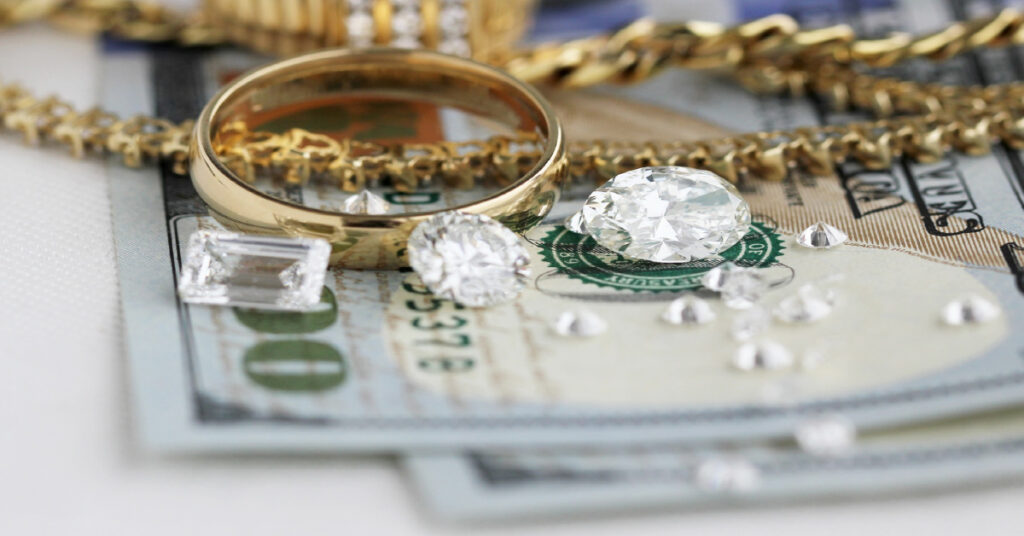
It takes a skilled appraiser who is knowledgeable in jewelry and in antiques to assess the value of antique jewelry. Anyone who is not trained will merely be guessing.
Imagine if you take your valuable antique jewelry to someone who is a crook. They may switch your piece or even tell you it is fake and offer to buy it for next to nothing. Not only do you need an antique jewelry appraiser, you need an honest one.
Do keep in mind that an antique jewelry appraisal can take place for a variety of reasons other than for the purpose of selling. To have your jewelry insured, your insurance company will ask for it to be appraised. In addition, jewelry is sometimes appraised when there is a liquidation due to bankruptcy. Whatever the case, getting a dependable appraiser who is an expert in both jewelry and antiques is priceless.
Local Jewelry Appraisal
When you are looking for an antique jewelry appraiser, it’s a great idea to go local. Simply conduct a search online for “antique jewelry appraisal near me” and you’ll find a list of appraisers. Sift through them to find those who are experts in antique jewelry appraising.
Past that, you will want to check to see how long the business has been around. Ask for references and see if they have an online presence. What is their reputation with local business authorities and the Better Business Bureau? Once you choose the top contenders, contact each of them. If you are treated rudely, don’t pursue. Those who earn the privilege of appraising your jewelry will be trustworthy and courteous. Choose the best local jewelry appraisal offer and if you are ready, go ahead and sell.
Vintage Jewelry Appraisal Online Free
Acquiring a vintage jewelry appraisal online free of charge is a cinch. There are many sites that offer such a deal. You want to be sure the appraiser you are dealing with has an upstanding reputation that’s verifiable and knowledge that is proven with certification. The more you can find out about the business or individual, the less risky your appraisal will be.
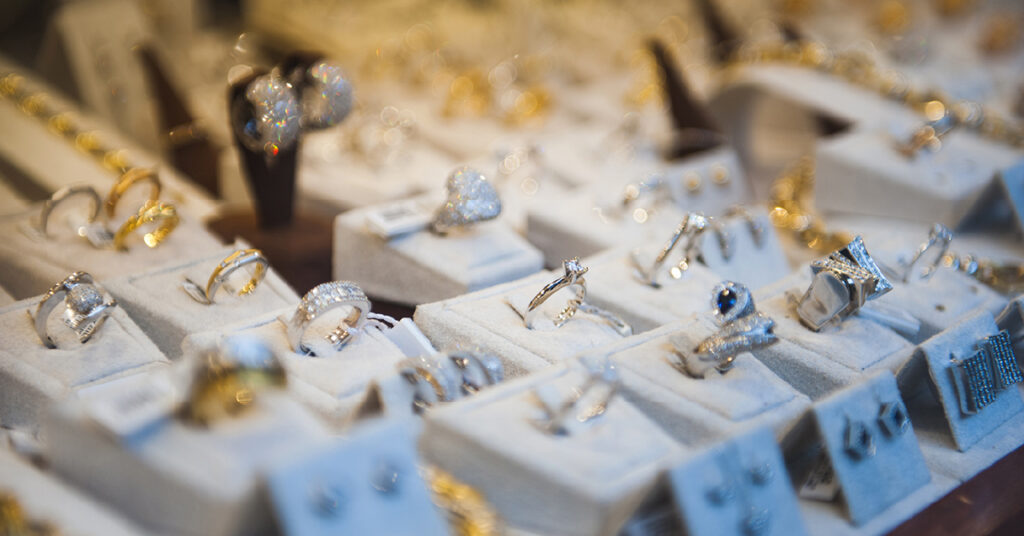
The way an online vintage jewelry appraisal works is that you usually contact the appraiser and are asked to create a complimentary account. You’ll answer some questions about your jewelry and upload some photos too. Antique jewelry experts will appraise your item and you’ll receive a written document stating the value and usually, you’ll be made an offer to sell your antique jewelry.
Ready to For Your Antique Jewelry Appraisal?
If you are needing a local jewelry appraisal and live in the Florida area, or an online appraisal for free, be sure to check out Antique Jewelry Buyers. In business since 1972, Antique Jewelry Buyers has some of the best expert antique jewelry appraisers in the industry. Their superior service is world renown and their integrity is unmatched. When you’re ready for your appraisal, you can trust the professionals at Antique Jewelry.
Where to Sell Fine Jewelry: Best Places to Get the Most Buck for your Bank
When you’re ready to sell your fine jewelry, you’ll want to find the best fine jewelry buyers who will pay you the most money. You’ll also want to be sure your experience with the online or local jewelry buyers is a pleasant and successful one. Find the best places to sell by following the suggestions below.
How Fine Jewelry Prices are Figured
When appraising fine jewelry to make you an offer, the buyer will take certain criteria into consideration. They will determine what your jewelry consists of such as gold, silver, diamonds, and so forth. They will also consider the age of the jewelry and any story behind it. The condition of the piece is also important.
Several things you can do to help ensure you get the most out of your exchange is to make sure your jewelry is clean. Also dig into the history of it, if possible. Did it once belong to a President’s wife or a queen? Is it from the Civil War era? Whatever you can find out and verify about your jewelry is helpful.
You’ll also want to have a good idea of what your jewelry is worth. Do research online. Talk to others who know jewelry. Most importantly, take your jewelry to more than one silver jewelry buyers or fine jewelry buyers so you can compare the offers.
Options in Finding Fine Jewelry Buyers
You will have many options when looking for silver jewelry buyers and fine jewelry buyers like local jewelry buyers such as jewelry stores, local antique buyers, pawn shops. Online options include selling your piece to an individual or company that specializes in buyer or you can sell on eBay or another platform.
If you are in a hurry to sell, be extra cautious. There are imposters lurking who pretend to be reputable fine jewelry buyers. Take your time, even if you are in a rush or the deal could go bad. Some options of places to sell are naturally quicker than others. Selling in person can typically be done in one setting so once you get an appointment to meet or walk in (if allowed), you are likely to be able to sell immediately. Ideally, you’ll be able to quickly meet with two buyers though because getting at least two offers is optimal.
Local Jewelry Buyers
There are benefits to selling to local jewelry buyers. Since you are dealing with the buyers in person, there’s less risk you’ll get ripped off. In addition, often times you get more for your merchandise with fine jewelry buyers or silver jewelry buyers when you are face-to-face with them.
To find local jewelry buyers, conduct an online search for “antique jewelry buyers near me.” Narrow the results down by reading their ads. Sift out those that are fine jewelry buyers and then go even further by seeing what they specialize in – gold, silver, antiques, etc. Once you’ve gotten a few of your favorites lined out, check their reviews and feedback and also see how long they’ve been in business. Make sure they have an online presence and ask fellow jewelry selling enthusiasts if they have heard of them.
The Joy of Selling Fine Jewelry
Fine jewelry buyers should have credentials to readily show you when you are doing business with them. They should also treat you with the utmost respect. You should never feel pressured to sell.
Once you’ve found a fine jewelry buyer you are comfortable with, you can feel good about selling your treasure. And, who knows…if the experience is a good one, maybe you’ll want to sell even more someday.
What you need to know about vintage men’s jewelry? A complete Guide
Let’s discuss and uncover the interesting information about men’s jewelry from the experts of treasures, local jewelry buyers.
Do you know? Men started wearing jewelry before women did. They used to wear rings, cuff links, bracelets, and so on for protection, style, and also good luck. After diving into the history, we found out that Neanderthals were the first ones to wear different styles of jewelry made with stones and bones 1,30,000 years ago.
If talking about today’s modern generation, people are still looking for the ancient designed jewelries either for collecting or selling to fine jewelry buyers to gain a good amount of profit. Therefore, masculine and feminine silver, diamond, gold, charms, gemstones, and platinum ornaments are trending today and were also trending a many years back, and they are meant to stay forever and ever with the same charm and demand.
Let’s discuss more interesting and useful facts about the retro-style jewelries of guys.
What are the different types of men’s jewelry on the market?
Jewels are not only for women. Men also love to wear these beautiful creations in different ways to look more fashionable and stylish. Here are some examples of masculine ornaments.
- Rings
- Cufflinks
- Bracelets
- Chains
- Pendants
- Earrings
- Watches
Where to buy and sell ancient and vintage men’s jewelries?
There are a few trusted and reputed shops and online platforms where you can purchase or sell your retro-jewelry. You can make your best decision and then proceed with the caution.
#1. Etsy and eBay
These two are the digital platforms where you will find a large number of ancient men and women jewelries for sale, which are provided by dealers and collectors from all across the world.
#2. Jewelry stores
You can find many trusted and experienced antique jewelry buyers near you. You can easily sell or buy your trinkets and can accept excellent customer service.
#3. local jewelry stores
A dealer is someone who takes pleasure in trading vintage, antique, and estate jewelry. They regularly have jewels for sale, but you’ll most likely get a good price when you sell to them.
#4. Auction houses
If you have an estate men’s necklace and want to sell it at a higher price. Then, rare trinkets are sold to the highest bidder at an auction house, where a large gathering of dealers and collectors assemble to bid the highest price. Or you can also find online auctions held by different jewel organizations.
How to identify whether your ornaments are real or fake?
There is the easiest and most trouble-free way to identify one. How? You can do some DIY steps which you can find on the internet taught by many people out there. But, these tips can sometimes be exhausting and you may not find a 100% successful result.
To avoid such things, you can easily consult a jewelry appraiser near your area or online, which is totally free of cost. An experienced appraiser will inspect your inherited diamond ring and can give you the exact information you’re actually looking for. Moreover, in an appraisal session, you can also uncover the historical story, craftsmanship, condition, and most importantly, the real price of your precious item.
Winding Up!
Therefore, if you are searching for a genuine gold jewelry buyer to sell or appraise your gemstone bracelets and rings, we can offer you the best deal and also excellent customer service, either through our online contact process or from our largest jewelry store in Florida. SEE YOU SOON 🙂


